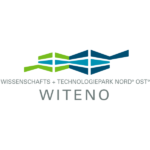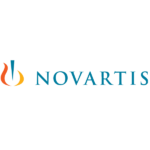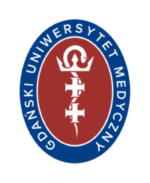The Baltic Sea region as one test site for development of health care products and services
The Baltic Sea region is taking steps towards being an interconnected test site for the development of health care products and services. This is a huge benefit for SMEs which faster and easier can bring their innovations to the market and it improves the health care offered to patients. For the regions it means more efficient use of existing research and innovation infra structure and economic development.

By (in alphabetical order): Krzysztof Bielawski (University of Gdansk), Wolfgang Blank (ScanBalt and Biotechnikum Greifswald), Daan Bultje (Healthy Ageing Network Northern Netherlands), Peter Frank (ScanBalt), Frank Graage (Steinbeis Team Northeast), Krista Kruuv-Käo (Competence Centre on Health Technologies), Lars Lindsköld (Region Västra Götaland), Tero Piispanen (Turku Science Park), Jaanus Pikani (Tartu Biotechnology Park), Imke Schneeman (Life Science Nord), Külle Tarnov (Tallinn Tehnopol).
![]()
An analysis done by Nord/LB Bank[1] concluded that the Baltic Sea region market for health technologies is strong and growing. The drive is mainly based on the need to upgrade and modernize the health care systems while at the same time reducing health care costs caused by ageing populations and meeting the challenges of rising consumer power and patient mobility.
The states and regions around the Baltic Sea together with individual universities, hospitals, innovation agencies and other important public and private stakeholders should do everything possible to exploit the opportunities and assist to remove barriers for a more efficient use of existing resources in our region. Otherwise the Baltic Sea region can miss the opportunity to meet the demand of the market and others may take the lead. There is no lack of competition.
Projects to catalyze actions
Several new and mutually coordinated project ideas and already initiated projects aim to catalyze the development of the Baltic Sea region into a borderless test site for products and services. Some of those are:
– To speed up SME based diagnostic tool developments by trans-national linking clinical test sites with cluster business support promoting the Baltic Sea region as one market for validation of ideas, products and services and introduce innovative solutions into the health care systems to reduce antimicrobial infections (funded by EU seed funds). Read more here.
– Sharing of health information i.e. data from healthcare and research institutions, home medical devices, wearables and biomaterials, allowing SMEs to use a standardized and secure cross-border data access for the development of innovative e-services and applications for the health consumer market (funded by EU seed funds). Read more here.
– Transnational integration of research competences and registry data from the heterogeneity of fracture management at hospitals in different countries facilitating innovation by the pharmaceutical, medical technology and biotechnology industry. Read more here.
– Sharing of knowledge and data from innovation infrastructures in health that provide good validation opportunities for startups to find the best market entry niches and get hands on feedback and input for product finalization. Read more here.
– Explore novel pathways and integrate already proven approaches in addressing the divide between less performing RDI regions and lead innovating region within health between and in the Baltic Sea region and the Danube area in order to promote more efficient and coordinated Investments (funded by Horizon2020, see www.danubalt.eu).
Together these planned or initiated projects form a massive and coordinated mobilization of ideas and resources which promises well for the future. The projects are expected to provide input to a discussion 17th of June in Jūrmala as a back-to-back meeting with the 6th Annual Forum of the EU Strategy for the Baltic Sea Region.
A key delivery from the discussion is foreseen to be a prioritized investment catalogue between Horizon 2020, structural funds and national and regional investments. Read more here.
Strategy behind the actions
Since 2001 ScanBalt BioRegion has worked to promote the Baltic Sea region as a leading and competitive health and bio economy. The efforts were facilitated by the establishment in 2009 of the EU strategy for the Baltic Sea region and ScanBalt BioRegion became denominated a flagship within the strategy having focus on innovation in health and health care systems.
The collaboration in ScanBalt BioRegion has been hugely successful in mobilizing regional and national resources for Baltic Sea collaboration and coupling them with EU investments in a coordinated and synergistic manner. Since 2004 strategies developed by the non-profit association ScanBalt® fmba and its many members have been setting the frame for the work.
A new strategy is being developed in 2015 for the years to come. Focus will be on making it easier for businesses to explore the Baltic Sea region as a market and development site, assist regions to gain economic development from BSR collaboration and promote shared use of knowledge and innovation systems and organizations.
For further information contact
For membership of ScanBalt see here.
[1] The health economy in the Baltic Sea region: Challenges and opportunities














